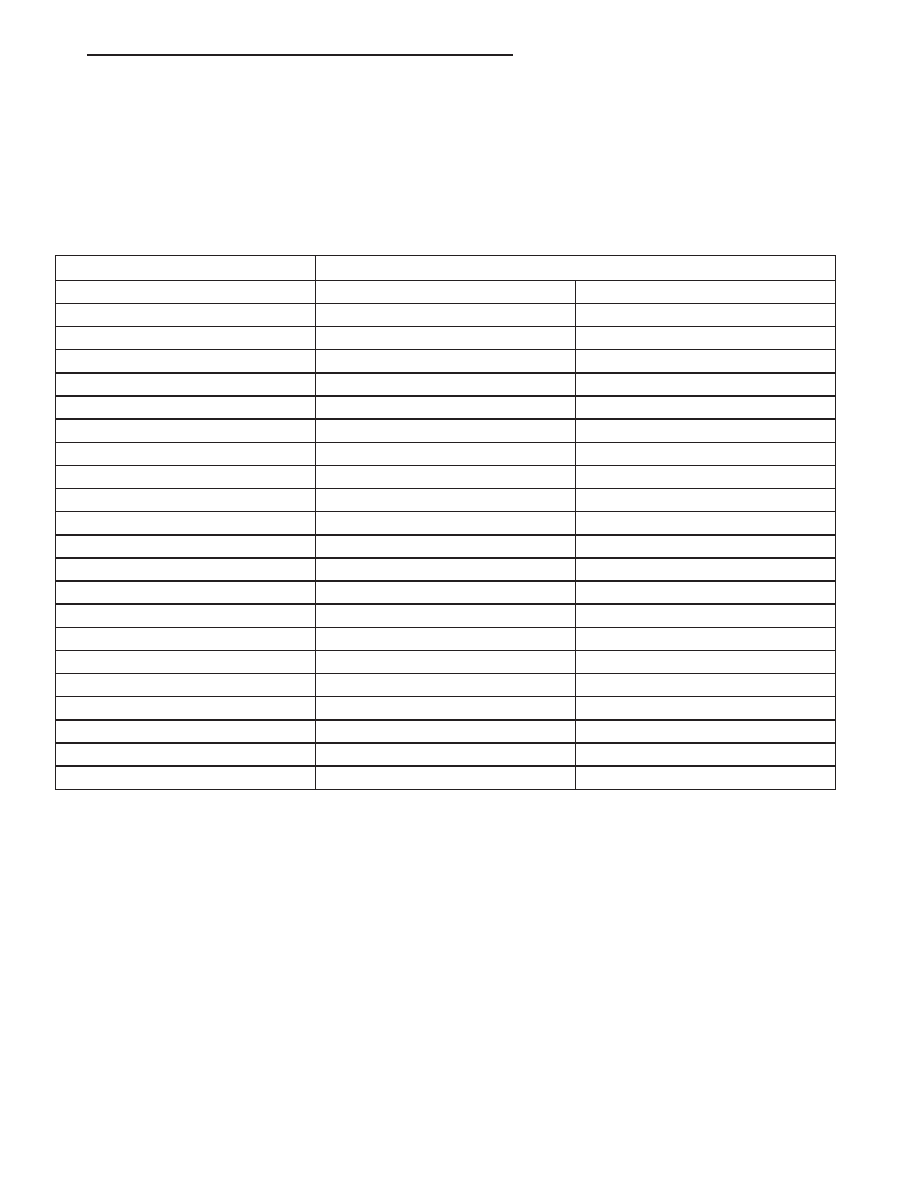Chrysler Sebring, Stratus sedan, Sebring Convertible. Manual - part 629

(Fig.
194).
The
turning
torque
should
be
between 5 and 18 inch-pounds.
Shim thickness need be determined only if any of
the following parts are replaced:
• Transaxle case
• Differential carrier
• Differential bearing retainer
• Extension housing
• Differential bearing cups and cones
DIFFERENTIAL BEARING SHIM CHART
PART NUMBER
SHIM
THICKNESS
MM
INCH
4659257
.980
0.0386
4659258
1.02
0.0402
4659259
1.06
0.0418
4659260
1.10
0.0434
4659261
1.14
0.0449
4659262
1.18
0.0465
4659263
1.22
0.0481
4659264
1.26
0.0497
4659265
1.30
0.0512
4659266
1.34
0.0528
4659267
1.38
0.0544
4659268
1.42
0.0560
4659269
1.46
0.0575
4659270
1.50
0.0591
4659271
1.54
0.0607
4659272
1.58
0.0623
4659273
1.62
0.0638
4659274
1.66
0.0654
4659275
1.70
0.0670
4659283
2.02
0.0796
4659284
2.06
0.0812
PRELOAD ADJUSTMENT W/O SHIM
(1) Remove the bearing cup from the differential
bearing retainer using Miller special Tool 6062A.
(2) Remove existing shim from under bearing cup.
(3) Reinstall the bearing cup into the retainer
using Miller Special Tool 6061, and C-4171.
NOTE: Oil baffle is not required when making the
shim calculation.
(4) Install the bearing retainer into the case.
Torque bolts to 28 N
•m (250 in. lbs.).
(5) Position the transaxle assembly vertically on
the support stand and install Miller Special Tool
L-4436-A into the bearing retainer.
(6) Rotate the differential at least one full revolu-
tion to ensure the tapered roller bearings are fully
seated.
(7) Attach a dial indicator to the case and zero the
dial. Place the tip on the end of Special Tool
L-4436-A.
(8) Place a large screwdriver to each side of the
ring gear and lift. Check the dial indicator for the
amount of end play.
CAUTION: Do not damage the transaxle case and/or
differential retainer sealing surface.
(9) Using the end play measurement that was
determined, add 0.18mm (0.007 inch). This should
give you between 5 and 18 inch pounds of bearing
JR
41TE AUTOMATIC TRANSAXLE
21 - 277
FINAL DRIVE (Continued)